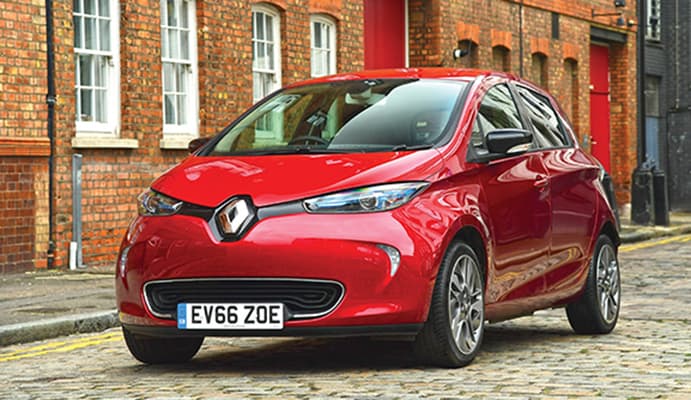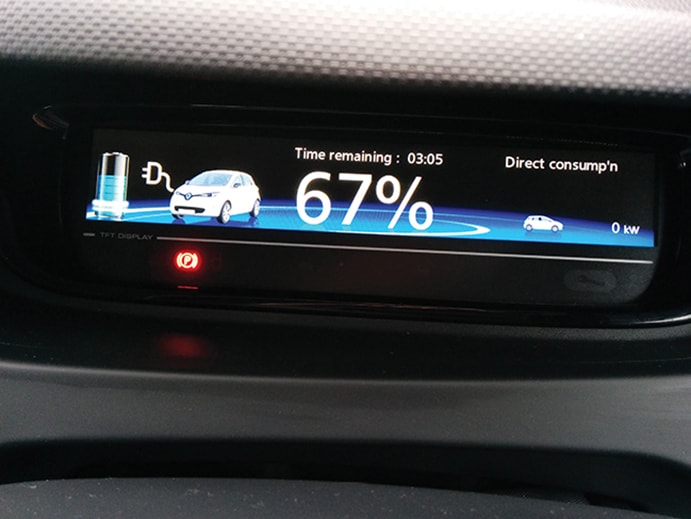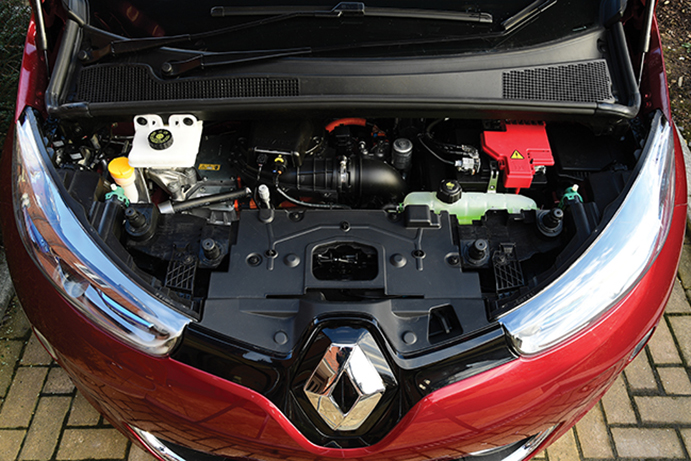Renault has almost doubled the battery capacity of its electric supermini, the Zoe. Chris Pickering puts it to the test
Could it be that the electric car has finally come of age? Stepping into the new Renault Zoe Z.E. 40 I would be inclined to argue it has. In some respects, this unassuming little car might seem like an underwhelming choice to back up that claim. After all, it takes more than four times as long to crack the 0-to-60mph sprint as the Tesla Model X we featured last month.
If you look at what‘s kept drivers from going electric in the past, though, the Zoe now ticks an awful lot of boxes. Renault has virtually doubled its range with the launch of this new 41kWh version, which is good for 250 miles on the NEDC test cycle. That’s said to equate to around 186 miles of real-world driving in good conditions – nearly 20 times the length of the average British commute.

This extended range has been achieved without changing the physical dimensions of the battery and with only a 15kg weight increase. It still contains 192 cells arranged in 12 modules, but battery developer LG Chem has managed to pack more active materials into each one. Meanwhile, the surface area of the electrodes has been increased by some 10 per cent and a new cooling system aims to ensure more consistent performance across the temperature range.
The next obstacle has traditionally been cost, but while the Zoe is somewhat pricier than a conventional supermini it’s an order of magnitude cheaper than offerings from companies such as Tesla. Starting at £23,445 (including the government’s Plug-in Car Grant) the 41kWh version is comparable to a well-specified Ford Focus.
That said, over 90 per cent of buyers choose to lease the battery separately (priced at between £59 and £110 a month, depending on the mileage), which drops the purchase price to £17,845. Opt for the entry-level 22kWh version and that figure falls to just £13,995.

Finally, the Zoe comes with a clever onboard charging system, dubbed the Chameleon. This means it can draw the maximum power from virtually any charging point, including the 43kW fast chargers that are increasingly found in motorway service stations. As a result, the Q90 version – more on that in a minute – can fill 80 per cent of its battery in just over an hour. Renault even includes a fully installed 7kW Chargemaster home-charging system with each car.
Of course, this would all be a bit redundant if the Zoe was rubbish to drive – but it’s not. The first thing you notice is the lack of noise and vibration as you pull away. Modern combustion engines have become so quiet that their noise often gets lost within the other sounds in the cabin. But take that engine noise away and it suddenly becomes apparent how much it does contribute. Listen carefully in the Zoe and there’s the occasional whir of the cooling system and a faint whine from the motors, but that’s about it. Even the wind and road noise is well suppressed by small-car standards.
This particular Zoe has the R90 motor; so named because it’s the rapid-charge variant and its total output is around 90hp (92 to be precise). It’s a DC-excited synchronous unit developed Continental, which uses copper coils in the stator and rotor, instead of rare earth metals. As a result, it can be used either as a motor, a generator or a transformer.
The Q90 has slightly different windings, which reduces the outright efficiency of the motor – knocking a few horsepower from the peak power figure and around 20 miles off the range – but allowing it to charge significantly faster on a 43kW supply. Somewhat counter-intuitively, this actually makes the short-range Q90 the recommended option for motorway use.

Both versions produce 220Nm of torque from just 250rpm, which means they’re more than up to the job of hauling the Zoe’s 1,480kg mass. Unlike a combustion engine the torque is there as soon as you touch the accelerator, which makes it feel significantly quicker than the 13.5 second 0-to-62mph time would imply. Overall, the performance is very similar to that of a traditional supermini.
And the same could be said about other aspects of the Zoe. Thanks to its low centre of gravity it handles neatly (albeit with fairly modest outright grip due to the low rolling resistance tyres). Packaging the batteries under the floor of the passenger compartment also means the boot is larger than average for a car of this size.
Most drivers wouldn’t find that it demands any significant compromise compared to a combustion-engined car. The reduced running costs – potentially more than £100 less for every 1,000 miles travelled – would soon start to offset a higher purchase price. Electric cars, it seems, have reached the mainstream.




Red Bull makes hydrogen fuel cell play with AVL
Surely EVs are the best solution for motor sports and for weight / performance dispense with the battery altogether by introducing paired conductors...